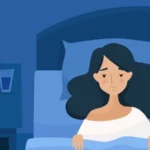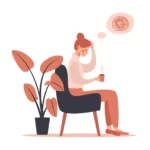Guided imagery is a relaxation technique, where a person creates positive images, promoting relaxation and reducing stress.
Stress is a very common mental issue, that is triggered by many situations in our daily life, especially in the workplace.
The aim of this technique is to imagine positive images which help to calm the body and mind and promote the relaxed sensation
Guided imagery is more focused on the creation of high-colored mental images and sensory details
Apart from reducing stress, and promote relaxation it can help with other issues are:
- Promote sleep, by reducing stress
- boost self-esteem
- boost immunity by reducing anxiety, and stressful situation which is the leading cause of weak immunity
- manage symptoms of a chronic condition
- improve mental health and performance
If stress is affecting your daily life or raising health issues, then you should seek the advice of a mental health professional.
In this post, we will explain to you guided imagery, how can it help cope with stress, and more.
What Is Guided Imagery?
Contents
As we know, guided imagery is a technique of visualization of a happy or relaxed image in mind, to promote calmness.
But what images are therapists used to bring these benefits, including – lying on the beach, walking through a forest on a sunny day, etc
To promote more relaxation, guided imagery is also done with relaxation music, sound effect, a specific object, and an experience.
This visualization makes you more motivated and attention to the sensory details of the image such as the sound of the sea, birds, the beach, and the aroma of flowers.
Make sure, you be focused and feel that you are there, to bring overall health benefits.
How Does Guided Imagery Work?
See, when we are under stress, blood pressure is increased, which leads to irritability, lack of focus, and increased pressure on veins
And when we take a break, where deep breaths, closing eyes, and remember the happiest moment and vacation are involved (3)
Being in that moment is similar to guided imagery, where a person imagines a relaxation picture in his mind to promote calmness.
Where having a quiet place with, deep, slow breaths, and relaxed imagination can lower your blood pressure, which will help in reducing stress.
Basically, guided imagery work based on the main 4 things are:
- Relaxation
- visualization
- sensory focus means – focusing on sensory details like birds, and sea sounds, and feeling the warmth of the sun on your skin.
- repeating this process
Deep breathing (stress Intervention Functional IFA) is capable to improve mood and to reduce levels of stress (6).
Breathing exercises day by day enhance your lung capacity to take more oxygen and help people with COPD and asthma.
How Can Guided Imagery Help In Reducing Stress and Anxiety?
Several studies have shown that guided imagery an effective in easing anxiety symptoms.
A 2018 study result, showed that guided imagery might help decrease pre-surgery anxiety, similar to Autogenic Technique.
Interventions using guided imagery of nature might be an effective and budget-friendly way to reduce anxiety (4)
A study result showed that guided imagery as stress reduction significantly reduces salivary cortisol.
GI creates a peaceful and calm environment, where your brain is manipulated, that you are in a real moment, in which the brain releases feel-good hormones.
These pleasure hormones like serotonin, and dopamine, suppress cortisol levels (a stress hormone) which overall enhances the calm.
Serotonin plays a vital role in the human body it involves the regulation of various activities (e.g. behavior, mood, and memory) (5).
A study has shown that depression and Parkinson’s disease are the results of a deficiency of dopamine (6).
Other studies reveal that GI helps cope with stress, and anxiety, by reducing rapid heartbeat, and muscle tension, and improving sleep.
Studies have shown that guided imagery can help reduce symptoms of stress and anxiety, such as rapid heartbeat, muscle tension, and difficulty sleeping.
Benefits of guided imagery
As you visualize this place, try to engage your senses as possible, including sound, smell, taste, touch, and sight (6)
The imagery might actually be more useful and beneficial than seeing the real scene. but how?
Because in imagery a person may not focus on the unpleasant features and focus on the most meaningful environmental qualities (3)
Work as a pain management
Relaxation techniques such as GI are the most vital non-pharmacological (without medications) methods for pain management.
Studies have shown that guided imagery reduced the intensity and quality of pain among COVID-19 patients.
Additionally, Delfani et al also found that guided imagery is able to reduce patients’ pain intensity (6)
Reduce Fatigue
Healing (GI) with MS patients showed improvement in depression, fatigue, and physical and emotional well-being (6) (7)
Numerous studies suggested that physical activity can lower the risk of experiencing feelings of low energy or fatigue.
Enhance Mental health
Guided imagery can improve mental health and physical performance by visualization of happier and more motivated images.
Also, help in alleviating stress and anxiety level to an extent.
Promote Quality of life
The study showed that MS patients improved their quality of life through meditation practice, and lower the risk of depression (7)
GI can make people can more people feel relaxed and better able to deal with life problems by lowering physical and mental stress.
Boost Immunity
When your body is under stress or anxiety it promotes cortisol (a stress hormone) which can suppress your immune system (9).
Studies suggest that GI can reduce stress and elevate the immune system by promoting WBC (white blood cells)
Research evidence supports that depression and stress are related to cancer development (2).
Promote sleep
Stress is also allied with sleep, where stress makes it difficult to fall asleep, and lack of sleep can worsen the condition. (2)
GI is another best way to promote sleep by decreasing workplace tension, stress, and running thoughts that interfere with sleep.
There are several other ways to promote sleep by knocking out stress including:
- Exercise
- meditation
- music
- get enough sleep
- Practice Relaxation Techniques
- Deep Breathing
- Progressive Muscle Relaxation
Improve Mood
GI (including active visualization or directed imagery for changing behavior) can help relieve symptoms and improve mood (5)
Also, enhance mental health by boosting mood as well as reducing signs of stress, anxiety, and depression.
How To Do it?
Guided imagery is a mental imaging technique and with basic steps for practicing are:
To find peace in this technique, you should do this:
- A quiet place helps you to focus on one thing, which creates a calm and relaxed sense.
- make sure, to relax your body and mind to relieve stress and anxiety, because yoga is all about relaxation.
- start taking deep breaths
- now, think you are in a peaceful place or situation
- Engage with sensory details like focusing on the sound, warmth, and aroma of flowers
- repeat this process, and do this for several minutes
Forgetting everything, being present in the moment, and letting go of your worries and thoughts away.
Disadvantages of guided imagery
GI also has certain cons or downsides or restrictions, just like other relaxation techniques here are some include:
Difficulty in imagining – If it is your first time, then it may be hard to visualize, but repeating this process can help in visualizing.
False expectations – People believe that GI can be a solution for all, and reduce stress quickly, it’s like other relaxation methods which may need practice, and takes time.
Other cons of GI are:
- Time commitment
- cost
- potential triggers
If you experience any negative thoughts, and want help, so talk to a professional doctor, which will provide the ideal treatment for you.
Down Line
Without enough sleep, you may feel low and unable to focus, on the other hand, too much sleep can also affect your health.
Stress is the primary reason for mental health problems, which are allied to physical illnesses like – heart disease, high BP, etc.


